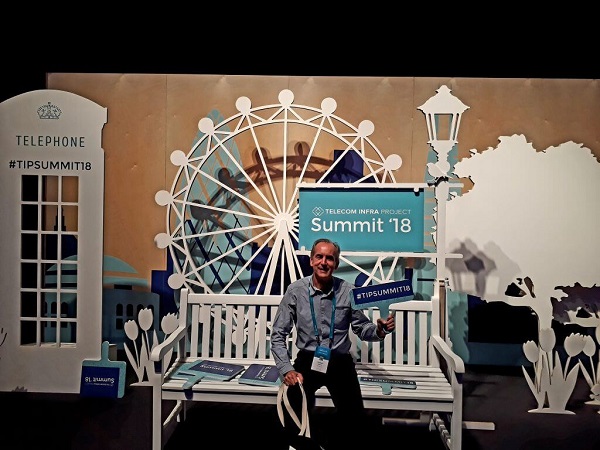The third TIP Summit took place in London this week. There was news of excellent progress in both the evolution of technology and also towards more widespread deployments. What did we learn? Where are we seeing success and what issues are key? Read on to find out.
We’ve been busy at this year’s TIP summit, learning from the community about the latest progress towards a better connected world. As you may recall, we’ve been involved since the beginning, sharing our own experiences of delivering remote and rural connectivity. As an early pioneer in disruptive models for extending connectivity, the TIP vision is very closely aligned with our own. We both want to solve the problem of bringing cost-effective coverage to those beyond the reach of traditional networks.

This time, TIP was bigger and better than ever, highlighting growing awareness of the connectivity gap – and concerted action to close it. It was heartening to hear about projects that are beginning to address this problem and to learn about success stories from a growing number of countries. While there’s a long, long way to go, new deployments are beginning to deliver results and, slowly but surely, increasing number of disconnected communities are being brought within reach of networks.
TIP is primarily focused on the key areas of the RAN and the backhaul to connect newly covered areas to core networks. Each has its own issues, beyond the fact of technical realisation – and we must always consider the business model and sustainability.
For example, areas that are beyond the reach of conventional networks are also often beyond the reach of logistics networks, power supplies and support teams. So, delivering a RAN isn’t the only problem to solve. You need to be able to move the equipment to the location, build it and provide power supplies, protection and more, so that the unit can function as expected. In addition, remoteness means that site visits for maintenance must be carefully handled – and avoided where possible. Remote management and simple control must be enabled.
That’s something we’ve considered in Vivada from the beginning. We’ve made it easy to deploy and have ensured that it’s fully self-contained with regard to power, so off-grid locations can be supplied without the need to connect to national power networks. As a result, we’ve also enabled surplus power to be used for other applications, bringing new, incidental benefits to deployments.
We also ensure that users are trained, so that any local interventions can be handled without the need to send an engineer to the site, while all critical and routine management tasks can be performed effected from a central location. It’s just as important to solve these operational issues as it is to enable RAN coverage, as the speakers at TIP confirmed. Ease of operation and OPEX reduction are key.
There is also a clear dividing line between extending coverage in metro and suburban domains and delivering connectivity into remote regions. While the overall goal of connecting more people remains unchanged, we have to recognise that there are big differences between these use cases.
In the first case, there may be infrastructure that is close to the desired site, so the focus is on facilitating the extension of coverage in the simplest and most cost-effective way. Fixed Wireless Access (or FWA) is typically the answer to this problem and, as can be imagined, this is much simpler than the latter issue of reaching to more remote regions. Many of the early-stage TIP projects have focused on this and there has also been considerable activity around the deployment of fibre for backhaul.
Deploying in regions that are far from any infrastructure is much more challenging, particularly as logistic issues are exacerbated in such situations. There were encouraging reports of new projects that are essentially greenfield deployments, mirroring our own experiences across a number of countries.
It is in this area that the greatest task lies ahead. We’ve been using satellite for backhaul for a number of years and there is now broad agreement that this offers the best approach for the most remote locations, while fibre can provide the capabilities for more centralised developments.
So, there’s a clear template that has emerged. RAN problems are largely solved, backhaul can be achieved through several methods, depending on the use case. There was, as can be imagined, considerable discussion of business models, but it is clear that there is no single approach that can be applied. In fact, flexibility is key, combined with a solution that is not only cost-effective but which is also optimised for ongoing support and management.
In short, operational issues need to be addressed from the outset – but, fortunately, there’s a solution that takes care of everything, from RAN to backhaul and supporting a sustainable business model: Vivada.
Well, almost – just bring your own devices and let’s connect!

